Chao Li
Image
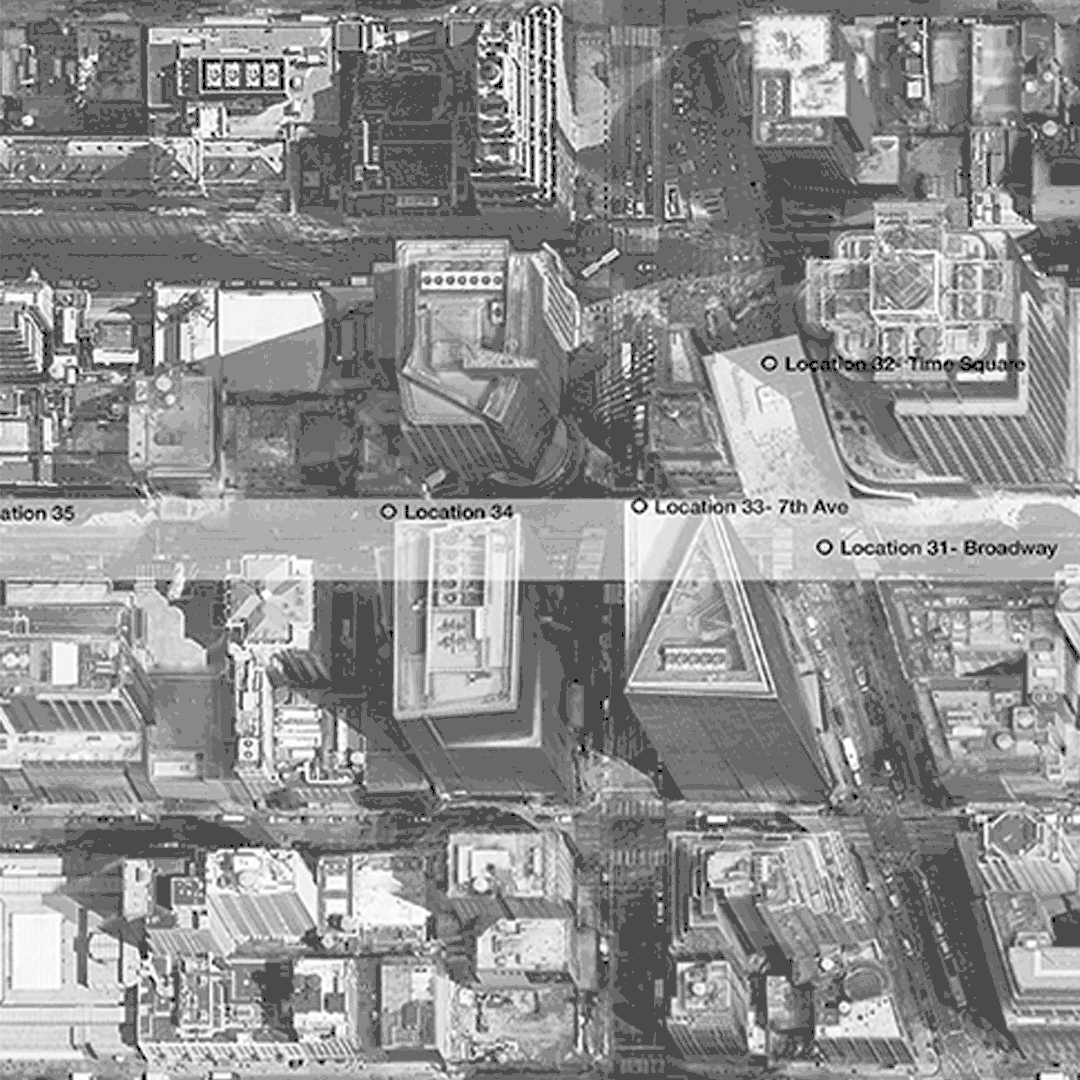
Image
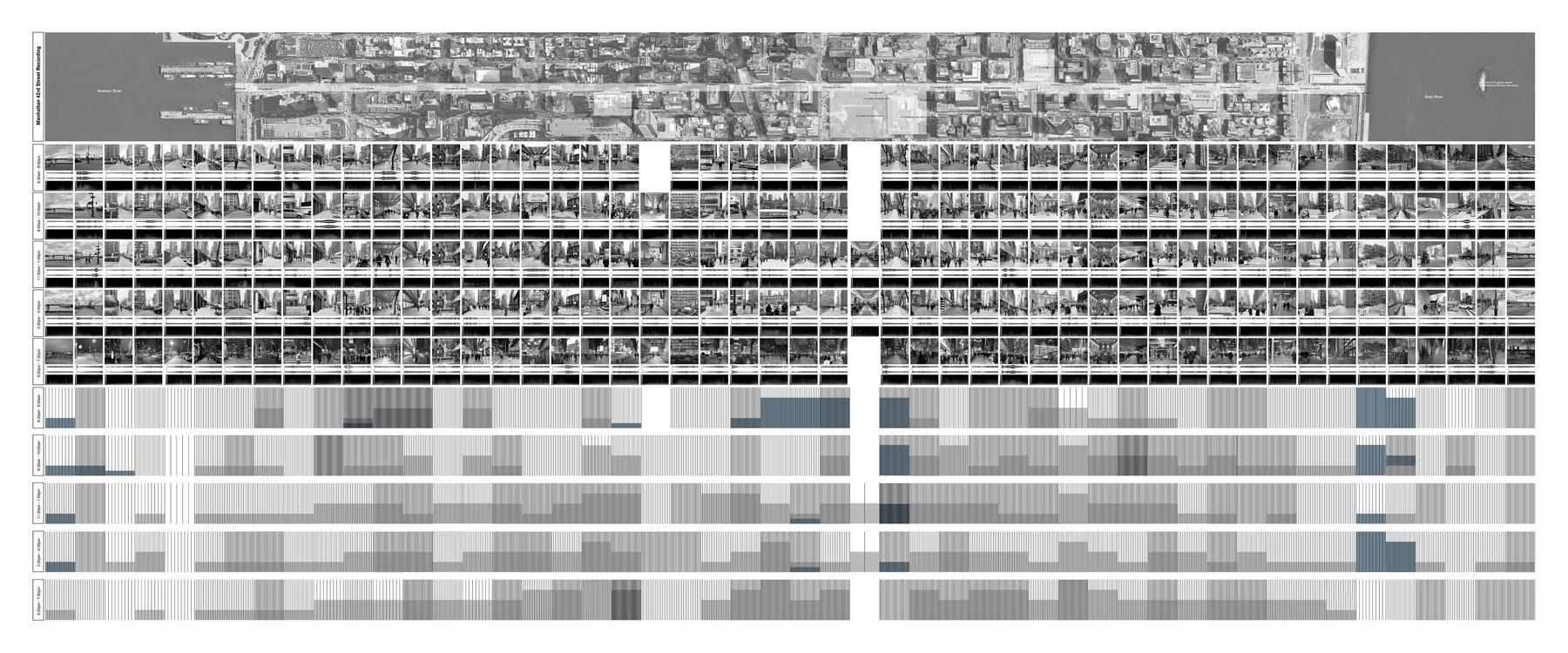
Manhattan
Sound-
Scaping
Manhattan Sound-Scaping
Sound as Main Media to Reshape Urban Ecology of 42nd Street
This proposal aims to draw people’s attention to our surrounding acoustic environment and shift people’s awareness from “hearing” to “listening”. The investigation focuses on 42nd Street as a primary study area which is historically one of the most iconic streets in the midtown of Manhattan, connecting the Hudson River and East River. As a witness of Manhattan’s history, 42nd street combines historical urban fabric and innovative ground. Different types of space along 42nd Street create rich ecological and cultural soundscapes. These spaces include the green spaces of Tudor City Green, Bryant Park, Hudson River Waterfront and the vibrant human realm of Times Square and Grand Central Station. They work well together but the balance between them is losing ground since humans take the main role in the environment. This project strategically turned the issues of noise into opportunities for social and cultural improvement and works to rebuild an urban ecology by rethinking the relationship between sound and environment and between sound and perception. The study of the dynamic relationship between sound, city, people and wildlife can be taken as a flexible strategy that provides suitable habitats, public realms, cultural programs.
Image Above
42nd Street Sound Recordings
Five rounds of sound recordings at 42nd street in a single day proofs that 42nd Street is dynamic combination of cultural soundscapes, natural soundscapes and noise.
Image
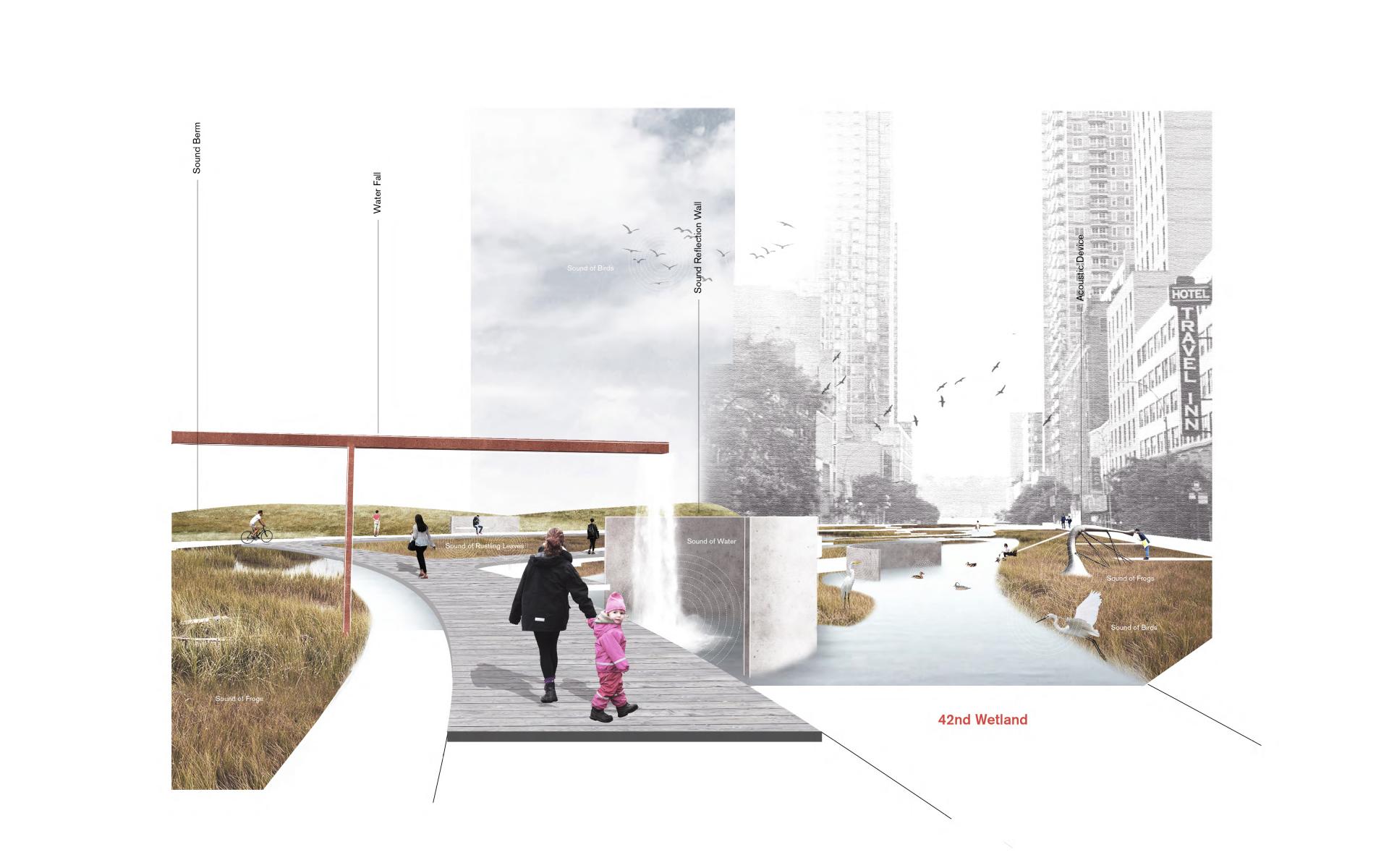
Wetland Perspective
After rebuilding the wetland habitat and bringing it back to the street, birds will find suitable habitat to live and play. It also provides a quiet spot for people to get in and explore this specific wetland soundscape.
Inner Wetland, the Natural Soundscape
Manhattan is a land lacking wetlands. Digging the ground and bringing water into the street can be a powerful way to create an inner wetland. This wetland will act as habitat to attract different species and shape the specific wetland soundscape. At the sametime, giving people a chance to experience the natural soundscape.
Image

Image

New York 311 Noise Complaints
The 311 noise complaints is the biggest issue in New York right now. In 2019, New York received about 10,0000 noise complaints. But the public ground and parks get people out of the noisy area
Image

42nd Street Master Plan
The design strategy for the 42nd street is shutting down the whole street and creating six different types of habitats. Adding with social programs and sound devices/sculptures will create a dynamic urban melody which is combined with cultural and natural soundscape.
Image
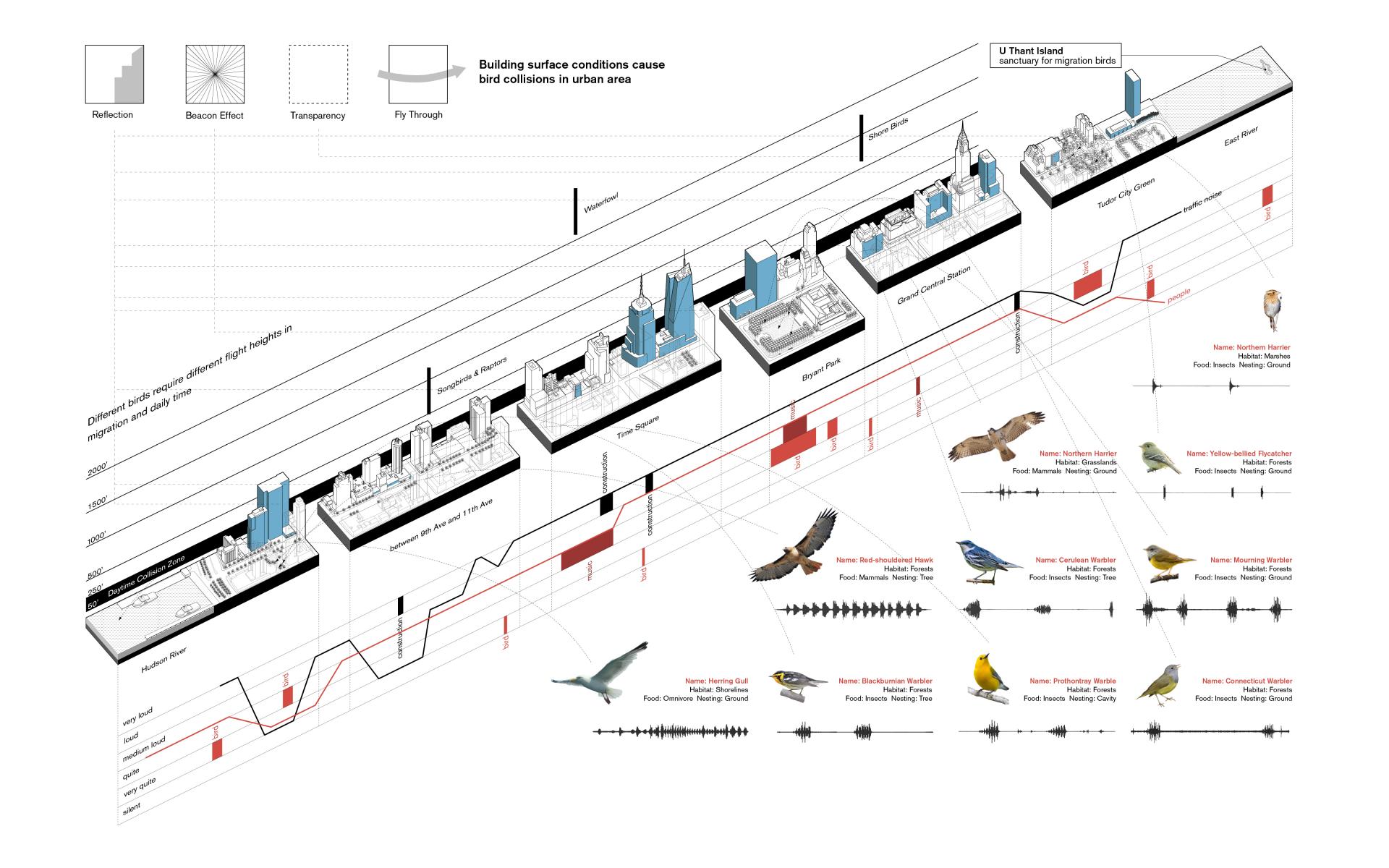
42nd Street Sound & Space Analysis
Glass building surfaces challenge birds’ daily life along the street. Birds rely on habitats, like Bryant Park and Tudor City Green, to nest and have food. Though it’s hard for them to fly along the street, you still hear birdsongs in different spots along the street. From the riverside to center, the street sounds from quiet to noise. Cultural sound,natural sound and noise happen at the same time.
42nd Street History
From marsh/forest to farmland, to concrete street filled with cars, 42nd street always acts as the witness of the history of Manhattan. As the icon of Manhattan, thinking about the future of 42nd street can represent the personality of Manhattan island.
Image
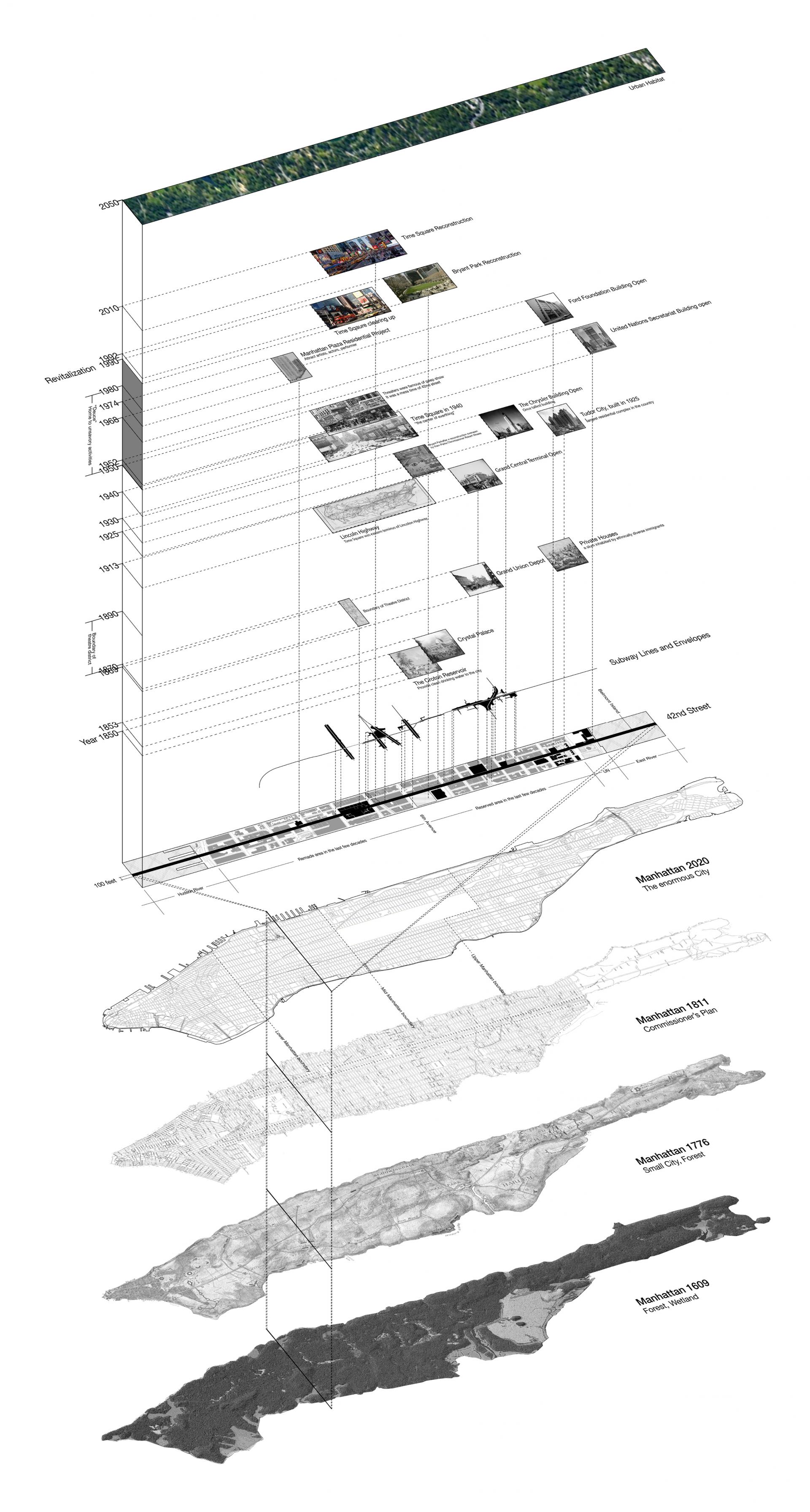
Image
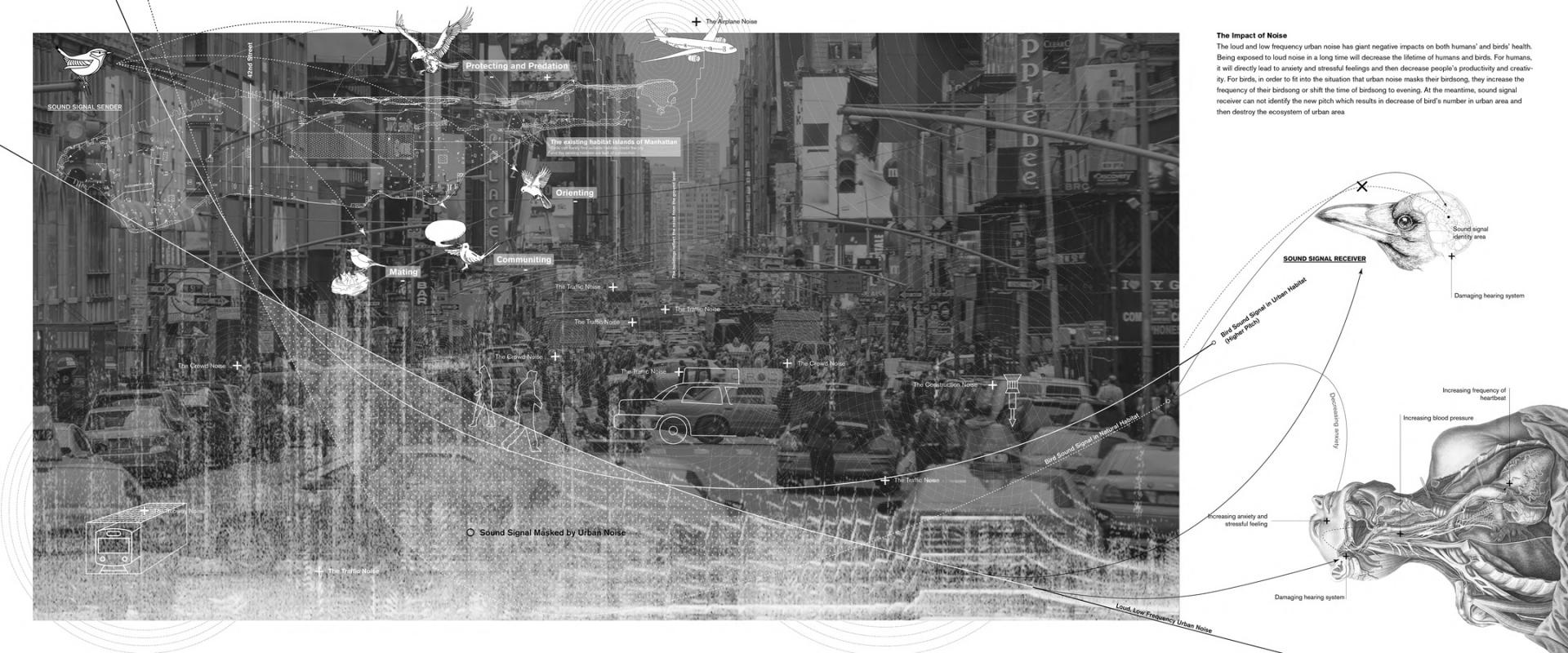
Chao Li is a landscape architecture designer who is always seeking the true definition of our profession. He believes landscape architecture is the driver to connect people with our surrounding environment by motivating and enhancing human’s multi-senses.